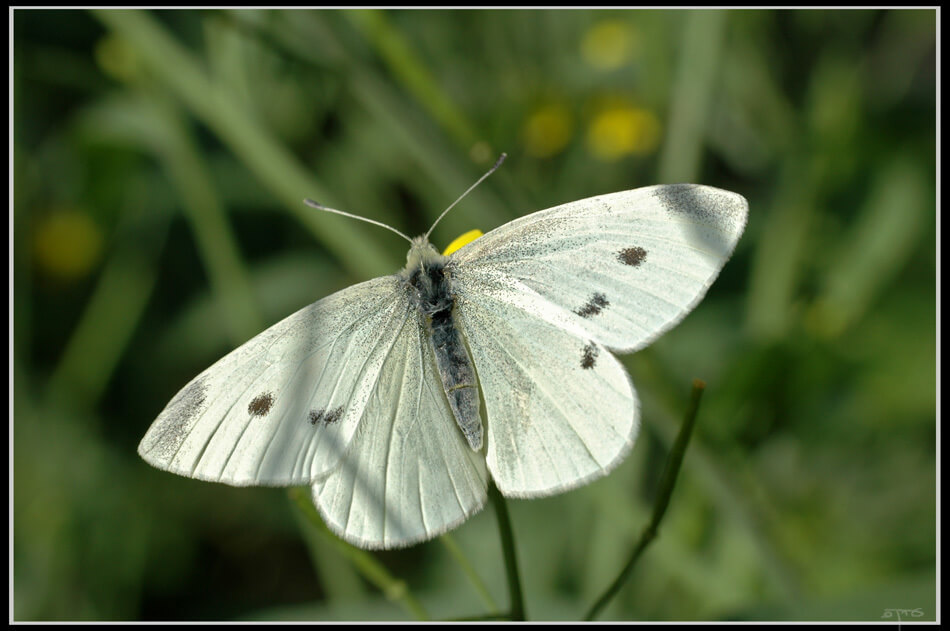Imported Cabbage Worm
Pieris rapae
|
Imported cabbage worm larva. |
Imported cabbage worm pupae. |
|
Adult imported cabbage worm. |
|
The imported cabbageworm is the larva of the cabbage white butterfly, although there are several other species of cabbage whites that, together, form a very common group of butterflies in the urban landscape. It is a notorious defoliator of cruciferous crops with a world-wide distribution that was first introduced into North America in the 1860s. Adults are white with as many as three black spots, two on the forewings, and one on the hindwings, that may or may not be present. Eggs are yellow, slightly pointed on one end, and laid singly on leaves, usually in an upright position. Larvae are pale green and up to an inch and a half long when fully grown. They are covered with fine bristles and have an indistinct yellow line running down the middle of the back. Pupae are also green with a series of frilled edges that cause them to resemble leaves and can be found attached to foliage with strands of silk.
There are three generations per year in Kansas, and although larvae can often be found in canola, they are never numerous enough to cause economically significant damage that results in yield loss. Treatments applied for diamondback moth will provide simultaneous control of cabbageworms, but treatment directed at cabbageworms alone is not justified in canola.
Page created by J.P. Michaud, 5/1/2024.


